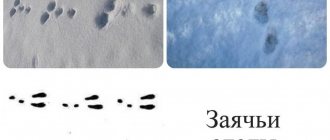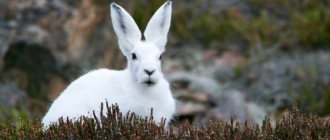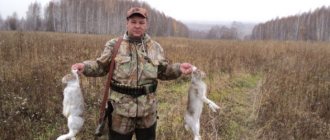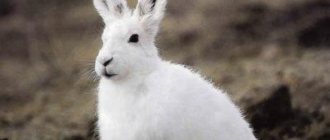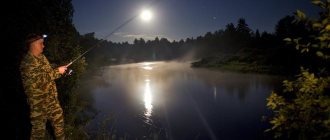In addition to pests - insects, hares also like to feast on the results of the work of gardeners and gardeners. If your area is also chosen by these eared creatures, you will probably be interested in how to catch a hare in the summer at the dacha. And it will be simply necessary to do this, otherwise the animal will pretty much spoil all your plantings. Moreover, they do not disdain root crops, young shoots of trees and shrubs, and even flowers. Even more, in just one season, hares can destroy all young plants by simply eating them.
Traces of crimes or how to understand that hares have taken over the area
A pulled carrot isn't all the damage that fluffies can cause.
They are extremely voracious and almost omnivorous, and at the same time they have sharp teeth, which allows them to gnaw on everything. Juicy tops and fruits, young sprouts of garden and flower plants, crispy new branches of seedlings - all this is a delicacy for animals. The easiest way to determine that you have uninvited guests is after rain, when clear prints of their paws remain on the ground. But there are other signs, if you look closely at them, you can understand that eared animals were in charge here:
- tulips and other flowers nibbled “on the stump”, and still at the germination stage;
- eaten cabbage, young beans, peas, lettuce, clover;
- gnawed branches of young grapes, raspberries, currants, and eaten foliage;
- gnawed bark and broken branches of young trees and shrubs.
Unlike other, smaller pests, hares leave not a torn, but an even cut on the stems.
How to make a hare snare yourself?
Contents of the article:
- How to make a hare snare yourself?1
- Making a snare2
- Installing a snare3
- Conclusion4
To make it, you will need a minimum set of certain items that can be bought at any hardware store or even found at home in the garage.
The main element is a loop, which is made of steel wire or thin cable, although some even use horsehair, nylon thread, copper wire, or fishing line.
Of all the above, it is recommended to use steel wire or cable. The remaining materials are often torn, and the hare runs away. The wire thickness should be between 0.7 mm and 1.00 mm.
Stores usually sell cables or wire with a thickness of 1 mm. If you don’t want to spend money, then find a piece of telephone cable in your home that has a cable. In addition, you can easily use a clutch cable, which you should have in your garage if you own a vehicle.
When you have found or purchased the necessary wire, it should be cut into lengths of 70-100 mm. This will be enough to form a loop later.
The wire itself needs to be softened, and this can be done by firing it in a fire. It is recommended to place it in the coals so that it becomes red hot. When it cools down, you should start boiling it in a saucepan with herbs, bark and pine needles to get rid of the specific metallic smell.
The fact is that the hare is able to smell any foreign odors, so it can move away from the snare. Try to immediately decide on the places where the loops will be installed and take local vegetation there, in which you will then do the digestion.
After cooking, the wire should be placed in a clean bag and not kept indoors so that it does not absorb new odors. I would like to draw your attention to the fact that you only need to take the loop while wearing gloves that have also previously undergone heat treatment.
How to catch a hare in the summer at the dacha
The most humane and simplest way is to place baits with the addition of sleeping pills in the garden. Modern drugs are harmless to animals, act quickly and are eliminated within a couple of hours. Therefore, it is important to detect the animal in a timely manner before it wakes up. You can take the caught hares far beyond the boundaries of the populated area, and, if desired, slaughter and eat them.
If desired, you can also make traps:
- Silok. Make a loop out of the wire and pull the other end through it. Tie the long side to a tree or stake.
- Trap pit. Dig a hole, camouflage it with thin branches, and place bait on top, for example, a carrot.
Hare hunting
Many hunters wonder how to properly place loops on a hare? It’s not difficult to do, you just need to know a few recommendations.
The current legislation of the Russian Federation does not allow catching hares using snares. There are only a few exceptions. Catching the white hare is permitted in some northern regions of the Russian Federation.
Hunting a mammal using snares in winter is the most ancient way of catching a hare. The best part is that these loops can be made at home.
It is not recommended to use loops made of single-core wire. The diameter of the wire should not exceed 0.8 mm, and also be no longer than 80 cm. No harm should be done to other wild animals. This list can be found in the rules themselves.
In populated areas, snare hunting is dangerous. This is bad not only for the catcher himself, but also for others. Very often hunting dogs get caught in such snares. In some cases this ended in the death of the animal. There can also be negative outcomes from hunting, so you shouldn’t forget about it, and it’s very important to know how to put the nooses on a hare correctly. After all, the consequences can be disastrous.
Effective means for repelling hares
The following methods will help prevent the appearance of animals and protect plantings from their strong teeth:
- Install a protective net around the trees by making a cylinder.
- Sprinkle sulfur, red pepper, and talc around the crops - hares do not like all these smells.
- Plant onions, lavender, sage, marigolds, wormwood, and parsley around the perimeter of the plot. Pests also don't like their scents.
As you know, hares are very timid by nature, so a dog will be a reliable guard for your dacha. She won’t give thieves a chance, and she’ll scare away the big-eared ones. Also, fence off your dacha by installing a high, at least 1.2 m, wire mesh. Moreover, dig it into the ground to a depth of 15 cm, and bend the upper part with a visor looking outward. Then the hares will not be able to crawl either from below or from above.
Hinge installation process
The process of installing a noose on a hare can be divided into several stages:
Approach to the hinge installation site.
Many hunters attach great importance to the approach to the place where the loop is installed, but opinions differ on how to do it correctly. Most people agree that a hare trail in the immediate vicinity of an established loop cannot be crossed , since the hare may turn into your trail and will not fall into the snare. Some people believe that you should not approach a hare’s path at all, as this will scare it away.
Others, on the contrary, say that you can follow the tracks of a hare, the main thing is not to turn away from them until you reach the trap . There is an opinion that the hare is only afraid of human tracks, but he is not afraid of ski tracks and can even walk on them, so the main thing is to set a trap on them.
Therefore, it is advisable to install catch loops on skis. Approach the stopping place from the side and do not cross the path; when setting traps along the edge, it is better to approach them from the direction of the forest. There shouldn't be any traces of you on the trail, but it's possible. It’s just that the hare may stop, interested in your tracks, but you need it to get into the loop at speed.
You will be interested in learning all the intricacies of trap fishing for sable, marten, and beaver.
Preparing the installation site
The easiest way is to place loops on passages in dense bushes; the hare will not turn anywhere, the loop is invisible among the branches. If the path runs along bushes and trees, it is better to place the trap near the bushes; their branches will camouflage it. On the other hand, the path can be limited by sticking several thick branches on the other side.
If the loop is attached to a tree, you can stick thin branches into the snow around it, they will distract attention and hide it . When it is difficult to get attached to the tree itself, you can make the necessary base yourself. To do this, they cut down a long pole, attach a snare to it, and place the pole over the path like a fallen tree, sticking one end into the snow and the other resting on a tree on the other side.
A well-camouflaged snare significantly increases the chance of catching an animal.
If there is nothing near the path, for example in a field, and the place is very suitable, you need to cut down a whole young tree and stick it in the snow next to the path, like a real one. The tree is heavy and even if the hare drags it away, it won’t be far away.
Loop fastening.
The trap is made of wire, for example steel, no more than 1 mm thick, preferably soft and it should be easily tightened. The diameter of the loop is about 20 cm, for a hare it is possible more, for a hare – less.
The loop can be made with a diameter the size of your palm
Before fastening, it is advisable to rub the wire against the wood to remove the smell. You need to rub it on the tree on which you will attach it, in an aspen forest - on aspen, in a spruce forest - on pine needles, etc.
Attach the loop above the path at a height of about 10 - 15 cm above the snow level . Either tied to a fairly thick branch above the path, or perpendicular to the trunk of a tree near the path. Depending on the type of loop, either by wrapping it 3-5 times around the trunk, or by threading it through a loop at the other end and wrapping it around the tree.
Cleaning up traces of installation
After the trap is set, you need to inspect the place and remove all traces of your activity, first of all from the hare path and its sides. These are chips, pieces of branches and bark, and other wood debris, otherwise the hare may stop just before the snare, becoming interested in them.
It is advisable to cover your own tracks with snow taken to the side and sweep them up . In winter, it is advisable to check the snares every day, but at least once every two days, otherwise your prey may go to the fox or other local inhabitants.
Installation
The hinges should be installed as discreetly as possible, using twigs and sticks to disguise and secure them.
The loop should be installed so that it does not touch the surface (snow or ground), but is 5-10 cm higher. The calculation for installation is simple - the hare must hit it with his head. A hare jumps well into a snare, overcoming an obstacle, for example, a fallen tree. If you can find such an obstacle on the hare path, then the snares should be installed on both sides along the path and above the tree itself.
If there is no suitable tree on the trail to secure the trap, you can use a pole 3-4 meters long. It is driven into the ground at a slight angle and bends slightly.
If the ground is very frozen, then the trap is attached to the “potass”. This is a long and fairly thin stick, to which the loop is attached. The animal, having fallen into the trap, will certainly rush forward and the “slut” will trail behind it. As a result, the hare will not be able to go far, since the stick will catch on something along the way.
When setting traps, be sure to mask the tracks.
